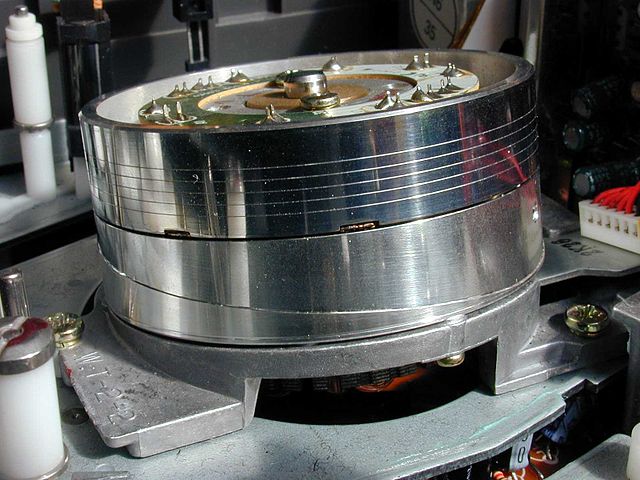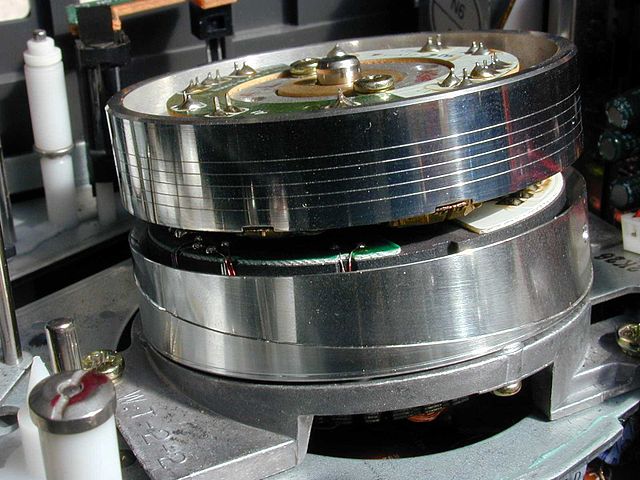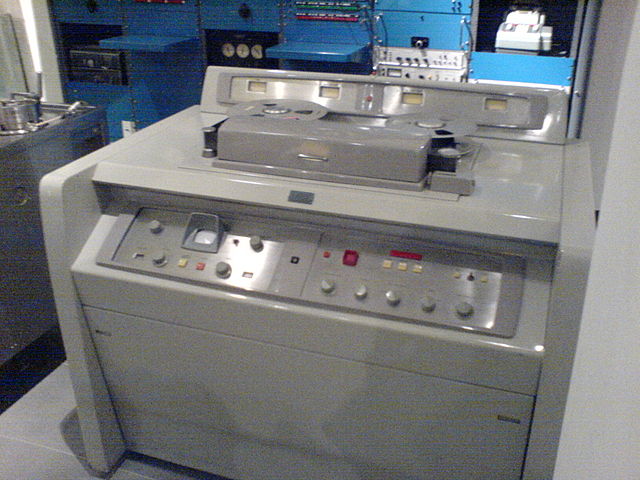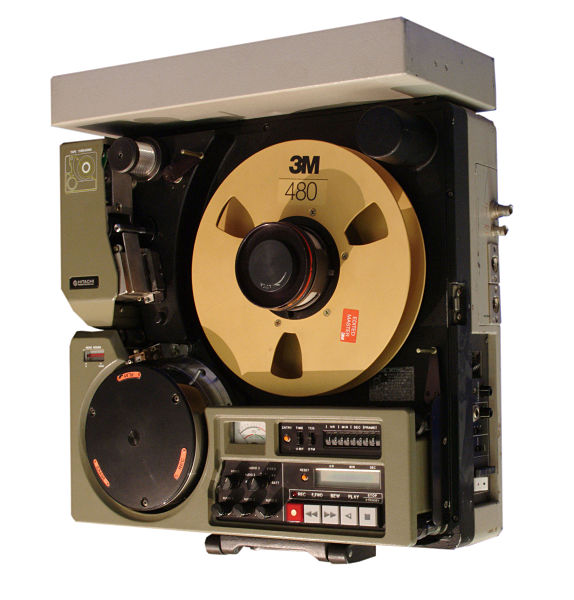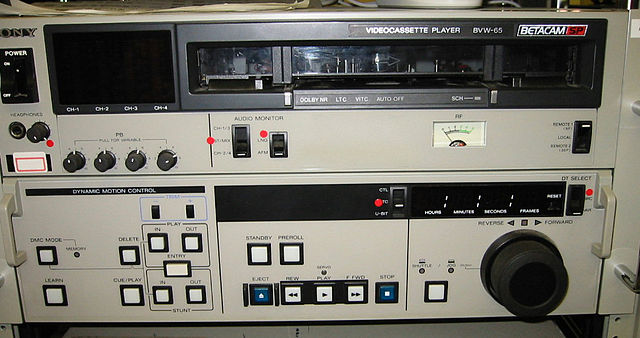Helical scan is a method of recording high-frequency signals on magnetic tape, used in open-reel video tape recorders, video cassette recorders, digital audio tape recorders, and some computer tape drives.
The head drum of a Hi-Fi NTSC VHS VCR; three of the six heads face the reader. The helical path of the tape around the drum can clearly be seen.
The same head drum with the rotating portion elevated for clarity
The rotating portion of the head drum showing the rotary transformer and three of the six tape heads used in this particular VCR
Type B videotape video scanner head
A video tape recorder (VTR) is a tape recorder designed to record and playback video and audio material from magnetic tape. The early VTRs were open-reel devices that record on individual reels of 2-inch-wide (5.08 cm) tape. They were used in television studios, serving as a replacement for motion picture film stock and making recording for television applications cheaper and quicker. Beginning in 1963, videotape machines made instant replay during televised sporting events possible. Improved formats, in which the tape was contained inside a videocassette, were introduced around 1969; the machines which play them are called videocassette recorders.
AMPEX quadruplex VR-1000A, the first commercially released video tape recorder in the late 1950s; quadruplex open-reel tape is 2 inches wide
The first "portable" VTR, the suitcase-sized 1967 AMPEX quadruplex VR-3000
1976 Hitachi portable VTR, for Sony 1" type C; the source and take-up reels are stacked for compactness. However, only one reel is shown here.
Sony Betacam-SP VTP BVW-65 VTR

